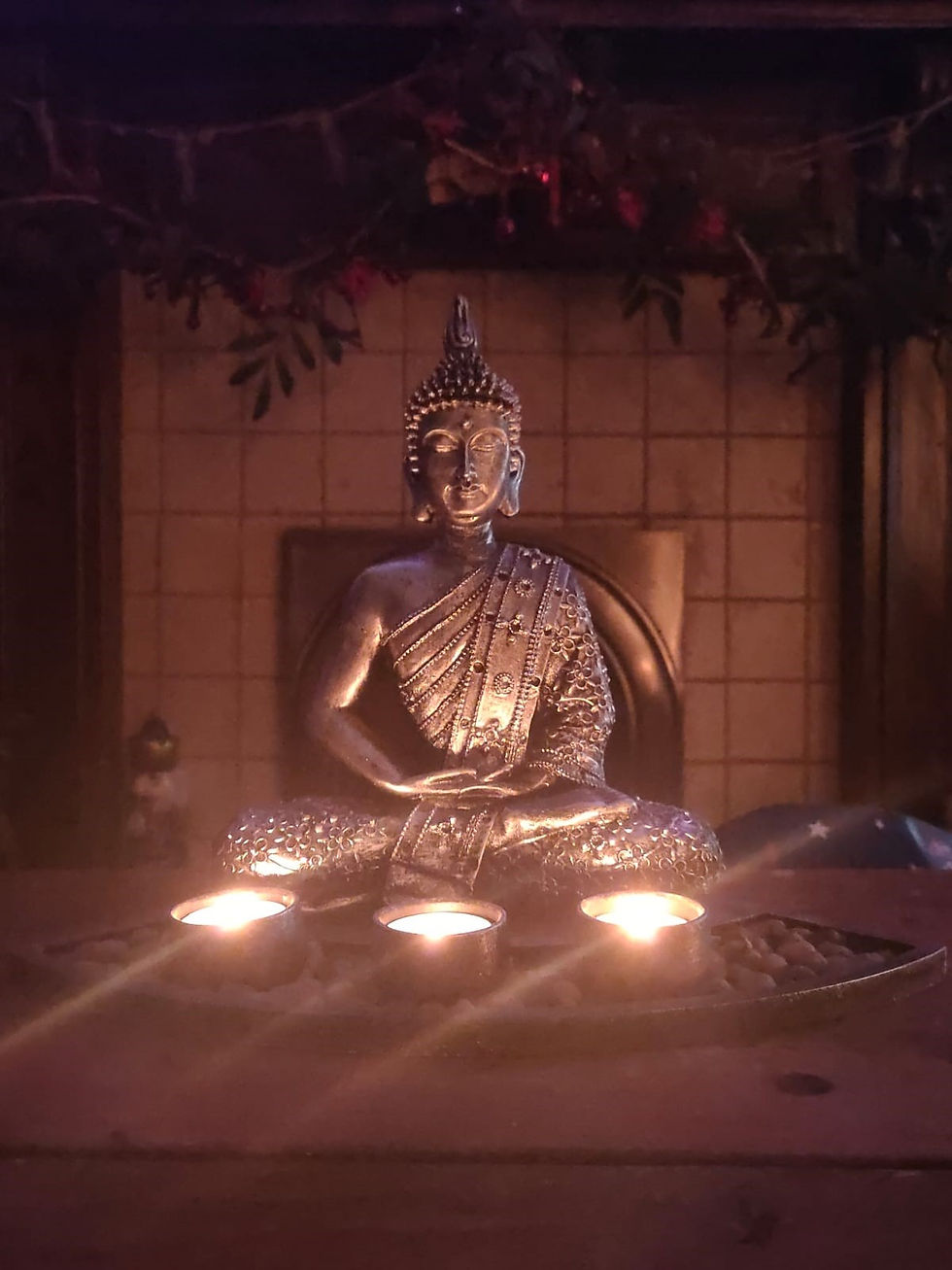How to Light up the Darkness
- Resilient Practice
- Dec 19, 2020
- 3 min read
Updated: Jun 20, 2021

Winter solstice, hiemal solstice or hibernal solstice also known as midwinter, occurs when one of the Earth’s poles has its maximum tilt away from the Sun - Wikipedia
In the northern hemisphere we are approaching the Winter Solstice. It is a time of stillness and turning inward for rest, repair, and reflection. It is also the Shortest Day. During the Winter Solstice, we see the light fall upon our part of Earth for the shortest time between sunrise and sunset.
Traditional celebrations around Winter Solstice centre around welcoming back the light, but there can be no light without darkness. Let us remember that the Shortest Day brings with it the Longest Night.
Before we welcome back the light, we can learn to honour the darkness.
What does the darkness mean for you? Hunger? Blindness? Ignorance? Isolation? Lack of direction? Fear? Cold?
Or Solitude? Regeneration? Repair? Rest? Tranquillity? Meditation? Inner wisdom? Healing?
In darkness we are afforded the opportunity to honour our Shadow.
And as with all opportunities, there is cause here for gratitude.
There is no day without night, heat without cold, or joy without sorrow. For the Universe to remain in balance, there must be equal amounts of all things. There is no negative or positive energy. There is only energy itself.
How we choose to perceive it is up to us.
The things we choose to see as positive are easily expressed and openly acknowledged and the things we mark as negative are often pushed into the shadows, disowned, and ignored. This is our interpretation of the Universe. Our unique model of the world. It is also reflected within us.
When we are born, we are whole. We come into being with an inherited genetic blueprint and unbound, limitless potential. This means that we are born with equal amounts of all things. We then choose which parts of us we will polish and nurture and which parts we will disown and put away.
These choices are made in response to how we are received by the world and those in our life, especially during childhood. This is because we are hardwired to survive. For a child, survival is synonymous with approval and acceptance. We will usually grow up to display and take ownership of those parts of the Self that are approved of by others and disregard those that are not.
Those parts of us that are put away become our Shadow.
Honouring our darkness or Shadow is one of the most valuable practices in the quest for personal enlightenment. Shadow work can be uncomfortable but offers profound personal insight and exceptional growth.
How do we recognise our Shadow?
When we are uncomfortably provoked by the behaviour of someone else, we are seeing our own Shadow reflected. The more uncomfortable we are, the deeper we have buried that part of the Self.
For example: we draw back in revulsion when we witness cruelty and abuse, theft, and violence in its worst forms, presented to us by the Universe. This does not mean that we ourselves have that kind of appalling activity hiding in the wings. However, in the right circumstances, we are all capable of the cruelty, manipulation and selfishness that this sort of behaviour requires.
When we witness it, we feel repulsed because it reflects our Shadow. When we engage our powers of observation, we can learn to recognise when this has happened and sit with it.
Observing the Shadow is the first step. This is often enough to affect positive change. When we acknowledge it, the discomfort is reduced. We can take this further by learning that those parts of the Self are ok. We can learn to accept them. By doing this we are honouring the Whole Self rather than only the parts that are in the light.
Considering that when someone’s behaviour uncomfortably provokes us, can provide fertile ground for growth and progress, is a Superpower!
As we move towards Winter Solstice in the northern hemisphere, we can sit with the darkness and once again meditate on what we wish to let go of and what we wish to take with us into the light.
To learn more about Shadow work see ‘How to Rise – A Complete Resilience Manual’ from Sheldon Press. It takes you on a journey of self-discovery sharing over 60 tools and techniques, including meditations with purpose, visualisation exercises and practical tools to help improve your mental wellbeing and reduce anxiety. 'How to Rise' helps you to take control of your life
Comments